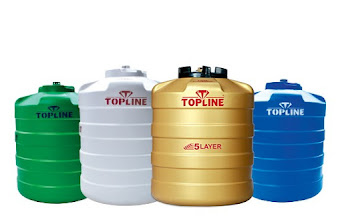BLOW MOULDING - THE COST-EFFECTIVE MANUFACTURING PROCESS FOR LARGE AND COMPLEX WATER STORAGE TANKS
Industries such as agriculture, chemical, and pharmaceutical companies rely on Blow Mould Water Tanks to store water. These tanks are created through the blow moulding process, which involves filling plastic moulds and shaping them with compressed air to achieve a uniform wall thickness and optimal strength-to-weight ratio. The mould used in the process is a critical factor in determining the tank's final shape and quality, and advanced technology and techniques allow for the production of round, oval, and square containers in various sizes, including both small and large storage tanks.
How are Blow Mould Water Tanks manufactured?
Blow Mould Water Tanks are produced through a specialized process called blow moulding, which involves filling a mould with the plastic resin in the form of pellets or powder. The mould is heated to a specific temperature, melting the plastic resin, and then compressed air is introduced to force the molten plastic to take the shape of the mould. The resulting hollow part is cooled to solidify and create a rigid, leak-proof water tank. Blow moulding has numerous advantages over other manufacturing processes, allowing for the cost-effective production of large, complex, and durable parts. As a result, Blow Mould Water Tanks are an affordable and efficient water storage solution for various needs.
What are the features?
Antimicrobial Feature -
One key attribute of the tank is its integrated antimicrobial technology, which safeguards against bacterial infections arising from the tank's surface. This technology is infused into the plastic resin during the tank's production process, and it helps to prevent the development of mould, bacteria, and other microorganisms, thereby boosting the tank's hygiene and safety. In particular, including this antimicrobial technology is crucial for tanks used in healthcare settings, laboratories, and other sectors where cleanliness is paramount.
UV rays protection -
Protection from UV rays is critical in maintaining the durability and longevity of Blow Mould Water Tanks. Over time, exposure to UV radiation can cause significant harm to the plastic material of the tanks, leading to contamination and damage. This, in turn, can negatively impact the performance and life of the tanks. Manufacturers include UV stabilizers and inhibitors in the plastic material during production to counter this problem. These additives absorb and reflect harmful UV radiation, which shields the tanks from photo-degradation and discolouration.
Anti-Oxidant Features -
The blow-moulded water storage comes with advanced anti-oxidant features. These features are designed to prevent any environmental stress cracking or thermal degradation, ensuring that the tanks remain in top condition for a long. This leads to greater customer satisfaction and longer-lasting service. The anti-oxidant features are incorporated into the plastic material used to make the tanks, preventing the formation of harmful radicals that can cause the internal components to weaken or break down.
Summary -
Topline Industries specializes in creating high-quality Water Tanks through Blow Moulding and Extrusion Blow Moulding. The Blow Mould Water Tanks are available in three, four, and five layer options, ensuring durability and ease of use. They aim to provide their customers with high-quality products at affordable prices, and all the water tanks meet their unique requirements.
Also read: SWITCHING TO HDPE PIPES: A RELIABLE AND SAFE SOLUTION FOR HIGH-PRESSURE APPLICATIONS




Comments
Post a Comment